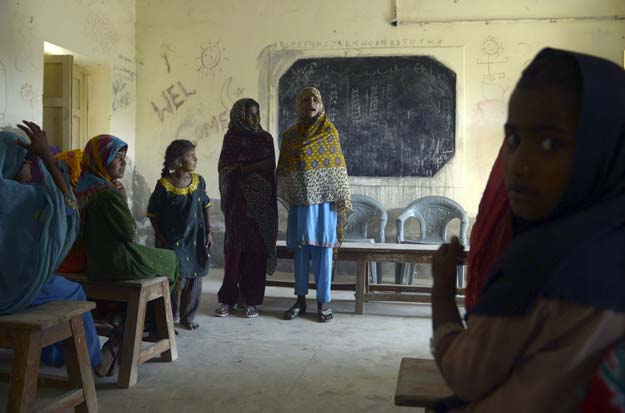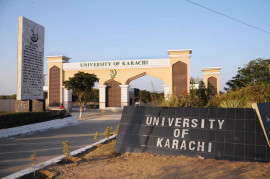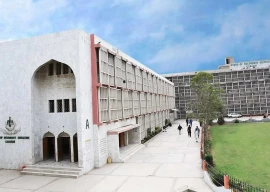
According to a recent survey, only 43 per cent of government schools in the country house toilet facilities for students, female dropout rates are increasing between class one and five, and half all schools have only one or two teachers for all classes.
These are some of the disturbing findings in government schools brought to light in a survey report titled ‘Do Schools Get Money?’, published by the Pakistan Coalition for Education (PCE), in collaboration with Oxfam.
As of September, nearly 57 per cent of public schools lacked usable toilet facilities, while 26 per cent do not have access to clean drinking water.

The coalition surveyed fund allotments and their utilisation in public schools across the country. The study also focused on ‘co-dependent factors’, such as student enrolments, attendance, teacher allocations and the working mechanisms of school management councils (SMCs).
Sample data was collected from 2,312 government primary schools; 10 districts from Punjab, six from Sindh, five from Khyber-Pakhtunkhwa, two from Balochistan and one from Kashmir.
A significant finding from the study is the increasing rate of female student dropouts among girl schools. On average, around 24 female pupils are enrolled in class one; this number goes down to 13 by the time they are promoted to class five. By comparison, dropout rates in boy schools were found to be slightly lower for the same classes.

In addition, 15 per cent of the teachers in government schools have a matriculation qualification, while 16 per cent have intermediate degrees. Nearly 36 per cent were found to have bachelor degrees, while the remaining 32 per cent held masters.
Access to books through libraries stands at a mere 13 per cent in all the schools surveyed.
Approximately half of the schools surveyed had either one or two teachers for all classes; 19 per cent of schools had just a single teacher, while 32 per cent of schools had two teachers. Nearly 19 per cent of schools reported having three teachers, while 11 per cent had four.
Only 20 per cent of the primary schools surveyed had five or more teachers.
Given the lack of facilities on the ground, the research revealed that nearly 68 per cent of surveyed schools did not receive their school council grants for the fiscal year of 2014-15; with 50 per cent reportedly having received the funds at the end of the fiscal year.
These annual grants are given to SMCs to help school administrations maintain their facilities. These school councils are composed of the parents of enrolled students, and teaching staff and community members.

The report showed that around 50 per cent of the total school council funds were utilised on repairs, instalments and whitewash at the schools.
The report shows that school council formulation requires half the members to be the parents of students. In the absence of a minimum education requirement on membership, the report claims that these councils are likely to make less informed decisions and demands.
“We need to drop the formulaic education system, which measures its performance on numbers rather than quality,” said Amima Sayeed, PCE chairperson and co-author of the report.
The report also claims that of the total education budget, only 10 per cent is allocated to primary education.
Published in The Express Tribune, September 20th, 2015.

















COMMENTS
Comments are moderated and generally will be posted if they are on-topic and not abusive.
For more information, please see our Comments FAQ